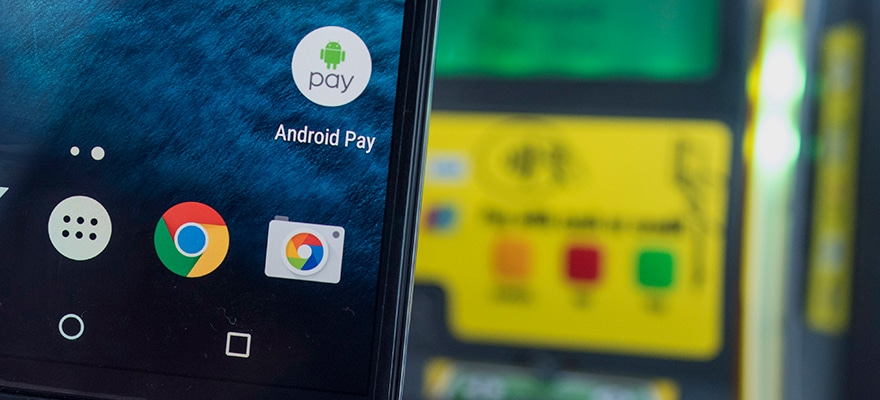At Google’s IO developer conference last week, Google presented a slew of new products, including its upcoming mobile OS, Android M. Arguably the product getting the biggest raves was the release of unlimited free storage for Google Photos. A product already known to most Android users, the unlimited free version of the app is available across most all operating systems, becoming a huge competitor to Dropbox and iCloud for backing up images. But, as this is a financial website, our eyes are on the release of Android Pay.
So what is Android Pay? With Google Wallet already existing for years, and used for purchasing digital goods and hardware on the GooglePlay store, the unveiling of Android Pay at first glance seems like Google wanting to follow with the ‘Pay’ moniker used by Apple Pay and Samsung Pay. Also, while not widely used, Google Wallet already incorporates many mobile payment features such as NFC transactions. Similarly, both products require users to connect their credit cards to enable mobile Payments from the product.
Android Pay Isn’t an App
The big innovation for Android Pay compared to Google Wallet is that it doesn’t operate as a standalone app but rather is integrated within the operating system. As an app, Google Wallet requires users to open the app when making payments at offline merchant terminals and then enter a password to unlock it for the transaction. With Android Pay, as long as the phone is unlocked, it can be put near the payment terminal and it will queue the payment to be made. As a rival to Apple Pay, Android Pay will also provide fingerprint verification for enabled devices.
Loyalty Points
Another feature that Google has incorporated within Android Pay, and one that shouldn’t be discounted as simply a gimmick, is loyalty cards. With it, users can load loyalty cards of retailers within Android Pay to also get used when making purchases. The reason this is something to keep an eye on is that it incentivizes retailers to partner with Google and provide Android Pay as an available payment option in their stores and online sites.
When it comes to loyalty cards and points, there are an abundance of retailers that have launched mobile loyalty apps for purchases. But, other than Starbucks, very few firms have gotten much user traction from the products. Therefore, the availability of a universal payment solution that incorporates these myriad of loyalty apps would be welcome by both consumers and merchants.
Like Apple Pay, Android Pay is available at any retailer that provides NFC payment terminal. According to Google, this provides 700,000 locations in the US where it is currently available. Also, unlike Apple Pay which is limited in devices it is available on, Android Pay can be used at physical locations with any NFC- enabled smartphone or tablet using Android 4.4 or higher. In terms of merchants, this boost of potential consumers provides more reasons for them to integrate contactless payment terminals.












